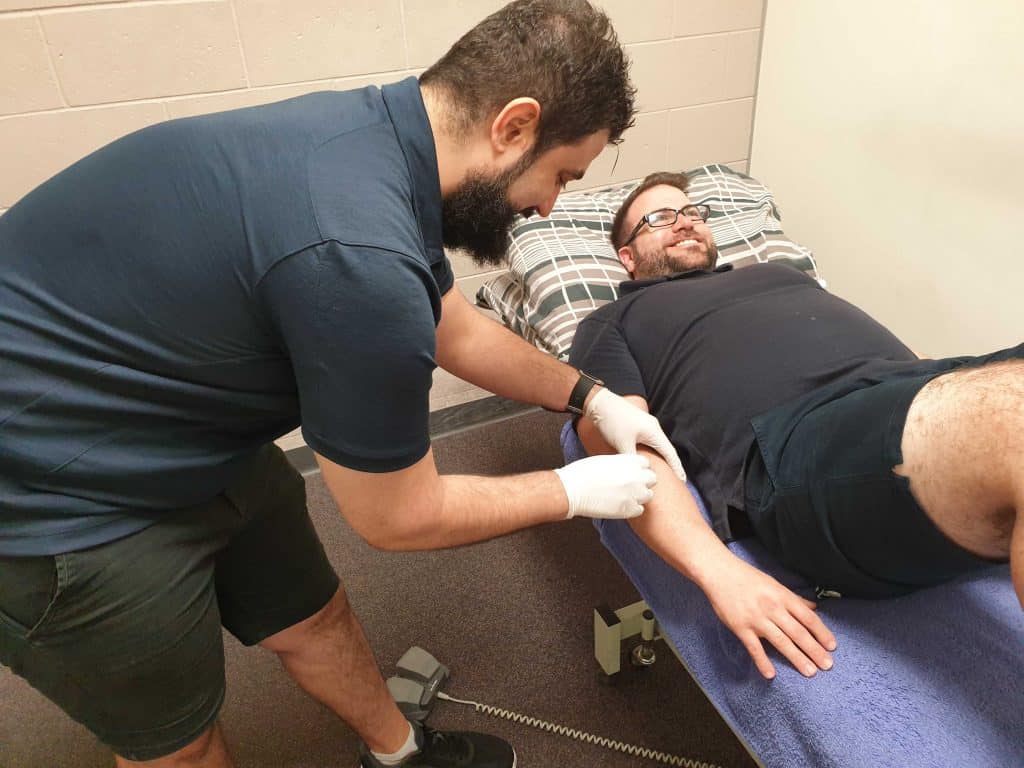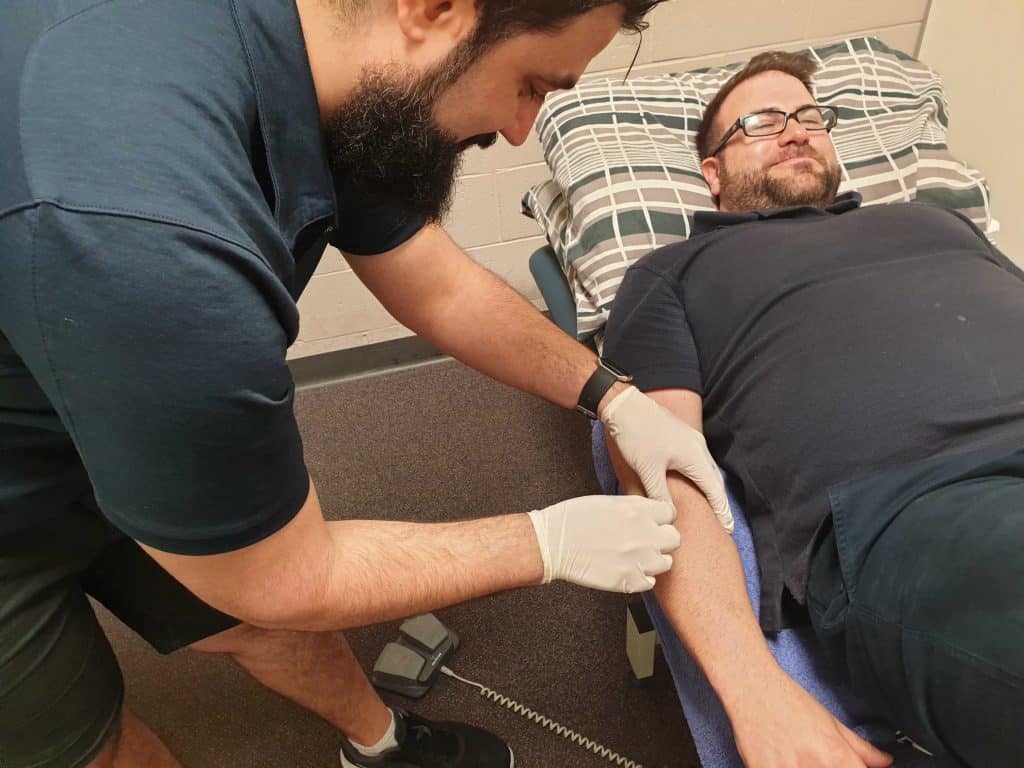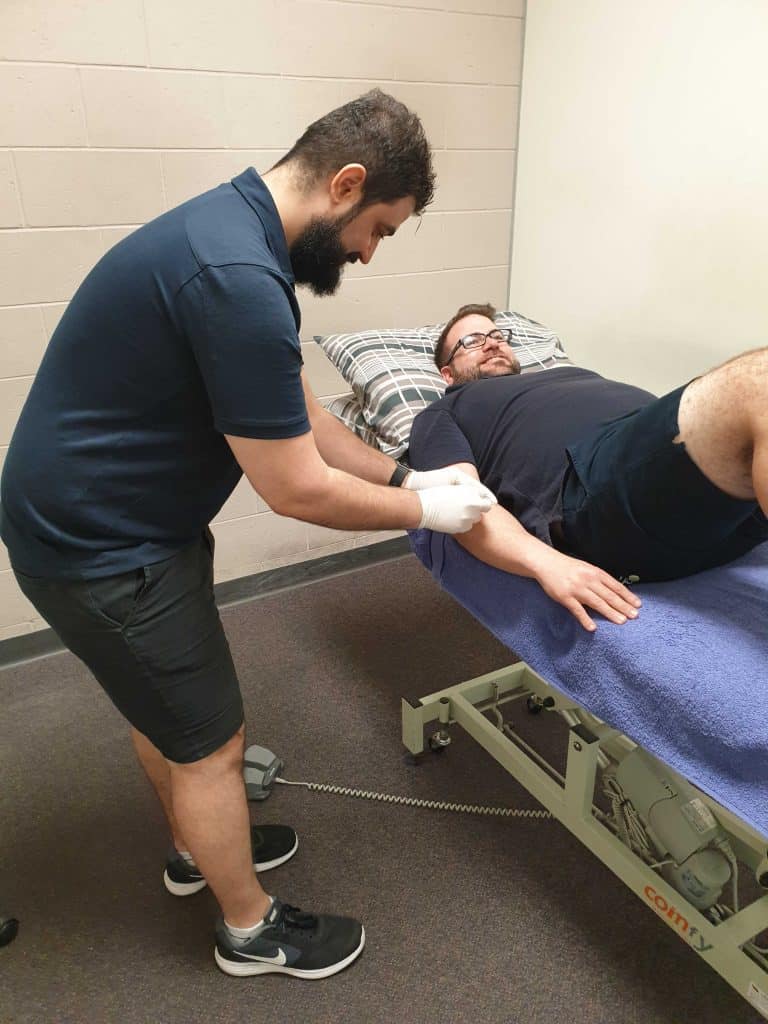Dry needling is an intramuscular manual therapy technique that involves a thin needle that penetrates the skin. This stimulates the underlying muscular, neural and connective tissue for the management of neuromusculoskeletal conditions or injuries.

The method involves a trained Physiotherapist using a thin dry needle (similar to the ones used in acupuncture) that is pressed through the patient’s skin. The dry needle stimulates a suspected trigger point, this relieves pain by releasing tightness or spasms within the muscle which results in an increased range of movement and function.
Dry Needling Is Different To Acupuncture
Although the Physiotherapist uses a needle similar to the ones that are used in acupuncture, dry needling is not considered to be acupuncture. Dry needling is based on Western physiologic approaches, whereas acupuncture is based on Chinese or Eastern medicine.
It has been shown in current research that the combination of dry needling and other manual techniques, have been very effective in the short to medium term to treat chronic injuries with improving recovery time.

How Does Trigger Point Dry Needling Work?
Dry needling works by releasing taut bands within the muscle that is associated with a trigger point. It also works by disrupting a reflex arc of a contracted tissue that stimulates biochemical changes within the tissue, this allows for an improvement of blood flow and healing to the affected area.
When the needle is inserted into a suspected trigger point, the Physiotherapist is hoping to achieve a local twitch response in the tissue. The local twitch is an involuntary muscle contraction that allows the muscle to relax.
Most individuals experience an immediate improvement in symptoms of pain and tightness after the dry needling treatment. Whereas, some individuals may take up to 24 to 48 hours to feel the effects of the treatment.

Common Conditions that can be treated with Dry Needling
- Chronic low back pain
- Chronic neck pain
- Headaches
- Chronic shoulder conditions
- Frozen shoulder
- Thigh or knee pain
- Greater Trochanter syndromes
- Lateral or medial elbow syndromes
If you’re suffering from any of the above symptoms and would like to find out more about how dry needling can help you. Press this link to make a booking with one of our Physios at a location near you.
This blog was written by Daniel Policicchio, Physio from the Beverley practice.
